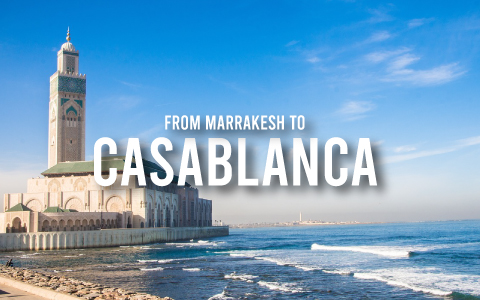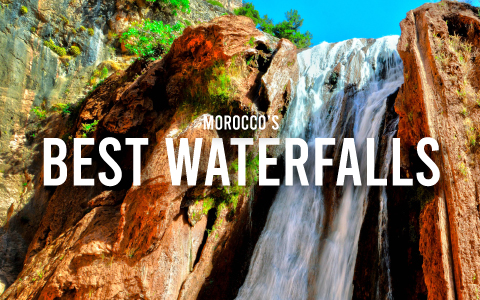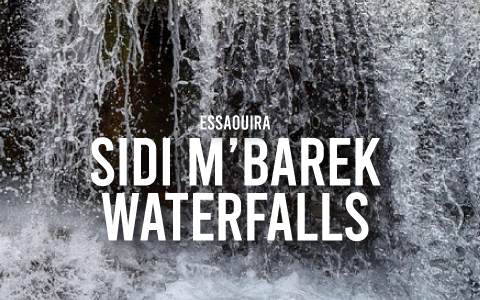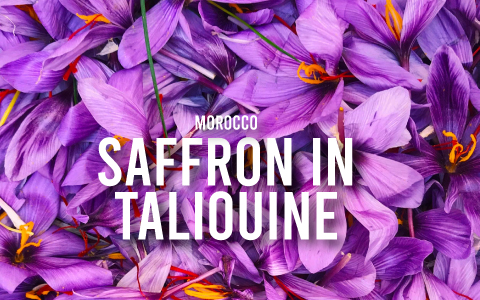
Discovering Casablanca from Marrakech: The Best of Morocco
A journey to Morocco is an experience that often starts in Marrakech, the Red City, with the allure of its souks, and the discreet elegance of Bahia palaces and riads. But to capture the multifaceted soul of this nation, one must venture further, toward the Atlantic horizon. When we talk about the ocean and Morocco, our thoughts immediately turn to Essaouira, but there is another city that is well worth visiting: Casablanca.
What to See in Casablanca
Far from the purely touristic imaginary, Casablanca is a major center of finance, art, and architecture. It is a city that does not reveal itself immediately but knows how to reward those who dedicate time to it, showing a sophisticated charm. Here are what we consider to be the must-see places to visit while in town.
The Hassan II Mosque, a Masterpiece on the Ocean
The Hassan II Mosque in Casablanca is a famous for its stunning architecture and the oceanfront setting. Built partly over the Atlantic Ocean, it almost seems floating on the water, especially during high tide.
It is one of the largest mosques in the world, and the minaret is among the tallest ones.
Inside, the prayer hall can host thousands of people and the spaces are embellished with the finest marbles, hand-carved cedarwood, and zellige (the typical Moroccan tiles).
Guided tours are the only way for non-Muslims to access the interior. They take place at scheduled times during the day (usually in the morning and early afternoon, with variations during Ramadan).
The Habous Quarter, the Modern Medina of Casablanca
If the Medina of Marrakech is like an ancient and chaotic labyrinth, the Habous district — also known as the New Medina — retains an exotic charm while reflecting more recent urban planning. It was, in fact, built by the French in the 1930s
Here you will find traditional Moroccan architecture with a European hint, and high-quality artisan shops where you can buy leather goods, precious carpets, and exquisite pastries, such as the “gazelle horns.”
During a visit to the Habous district, there are a few must-see spots. First is the Royal Palace which, although not open to the public, has an impressive structure with richly decorated walls that are well worth a look. Then there’s the Librairie des Habous, a traditional bookstore where you can find religious texts, Arabic calligraphy, and rare old volumes in both French and Arabic. Finally, the Mohammed V Mosque, not always open, but definitely worth seeing.
The Corniche and the Atlantic Ocean
The Corniche is the waterfront of Casablanca, the place where the city opens up to the Atlantic Ocean. It is a succession of beach clubs, elegant restaurants, and cafes with a view where you can enjoy the sea breeze while sipping a mint tea or an aperitif at sunset. A walk here offers a glimpse of the more affluent local life and a sense of space and freedom that provides a perfect counterpoint to the narrow streets of the center. It is the ideal place to end the day, watching the Atlantic waves break on the coast.
The Art Deco Architecture
Casablanca holds a unique architectural heritage of its kind. The city center, particularly around Mohammed V Square, is an open-air museum of Art Deco and Neo-Moorish buildings. Buildings such as the former Sacred Heart Cathedral (now deconsecrated and used as a space for cultural events), the Palace of Justice, and the central post office (Grande Poste) are magnificent examples of this style.
Villa des Arts, the Museum of Casablanca
The Villa des Arts in Casablanca is one of the examples of Art Deco architecture. Surrounded by a peaceful garden on Boulevard Brahim Roudani, it houses a permanent collection of contemporary Moroccan and African art and frequently hosts temporary exhibitions on current themes like urban life, identity, and modern culture. It also functions as a lively cultural center with workshops, lectures, film screenings, and artist talks.
Morocco Mall, a Surprising Shopping Experience
Morocco Mall, opened in 2011, is Africa’s largest shopping center, featuring over 350 stores, a hypermarket, restaurants, a cinema, and more. It’s famous not only for its vast retail offering, but also for its unique attractions.
One highlight is Aquadream, a massive cylindrical aquarium holding one million liters of water, which visitors can admire from all sides or even dive into with a guide. Another standout is the musical fountain, one of the largest in the world, with jets reaching up to 60 meters in sync with light and sound shows every 20 minutes.
Casa-Port Railway Station
The Casa-Port railway station, fully renovated between 2008 and 2014, is a sleek, modern transport hub located near the port, the old Medina, and Casablanca’s Art Deco district.
Designed by the French architecture firm AREP, the station features an elegant steel and wood canopy supported by tree-like columns, with natural light filtering through wide glass walls and a contemporary mashrabiyya screen. The interior is open, bright, and easy to navigate. Beyond trains and ticketing services, the station includes shops, cafes, restaurants, and a 500-space underground parking lot. Whether you’re traveling or not, Casa-Port is worth a visit for its impressive modern architecture.
How to get to Casablanca from Marrakech
Casablanca is at about 240 kilometers (about 150 miles) from Marrakesh.
The Moroccan railway network (ONCF) offers an excellent and punctual service. The journey of about two hours and forty minutes, allows you to observe the changing landscape, from the fertile plains around Marrakech to the more industrialized areas approaching the coast.
For those who desire maximum flexibility, renting a car is a great choice. This allows you to travel at your own pace, without the stress of schedules. If you prefer, you can book a private tour with a guide. An expert driver and guide will be at your complete disposal for the entire day, revealing stories and anecdotes and customizing the itinerary according to your interests.



